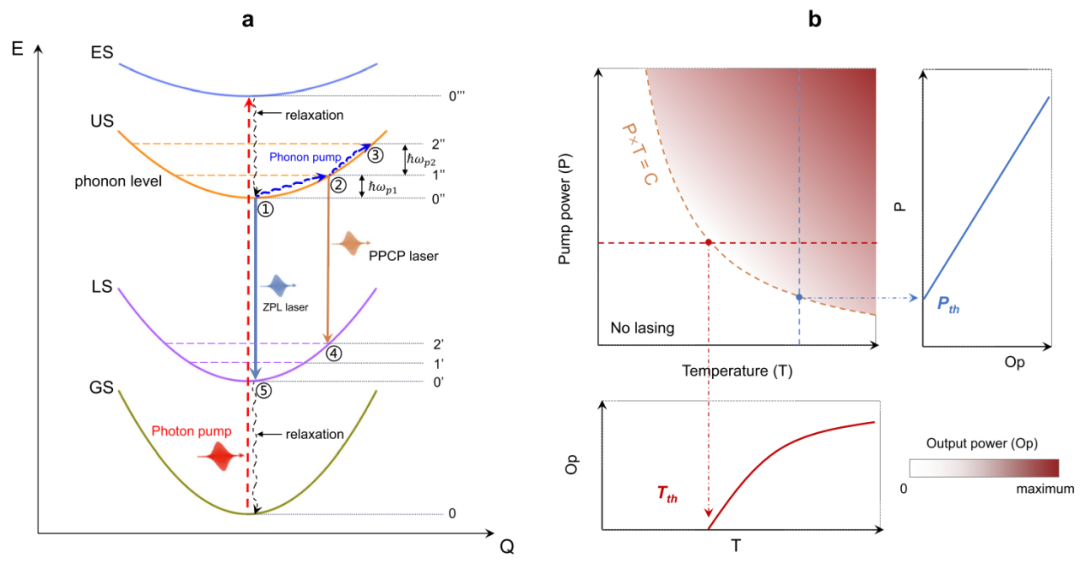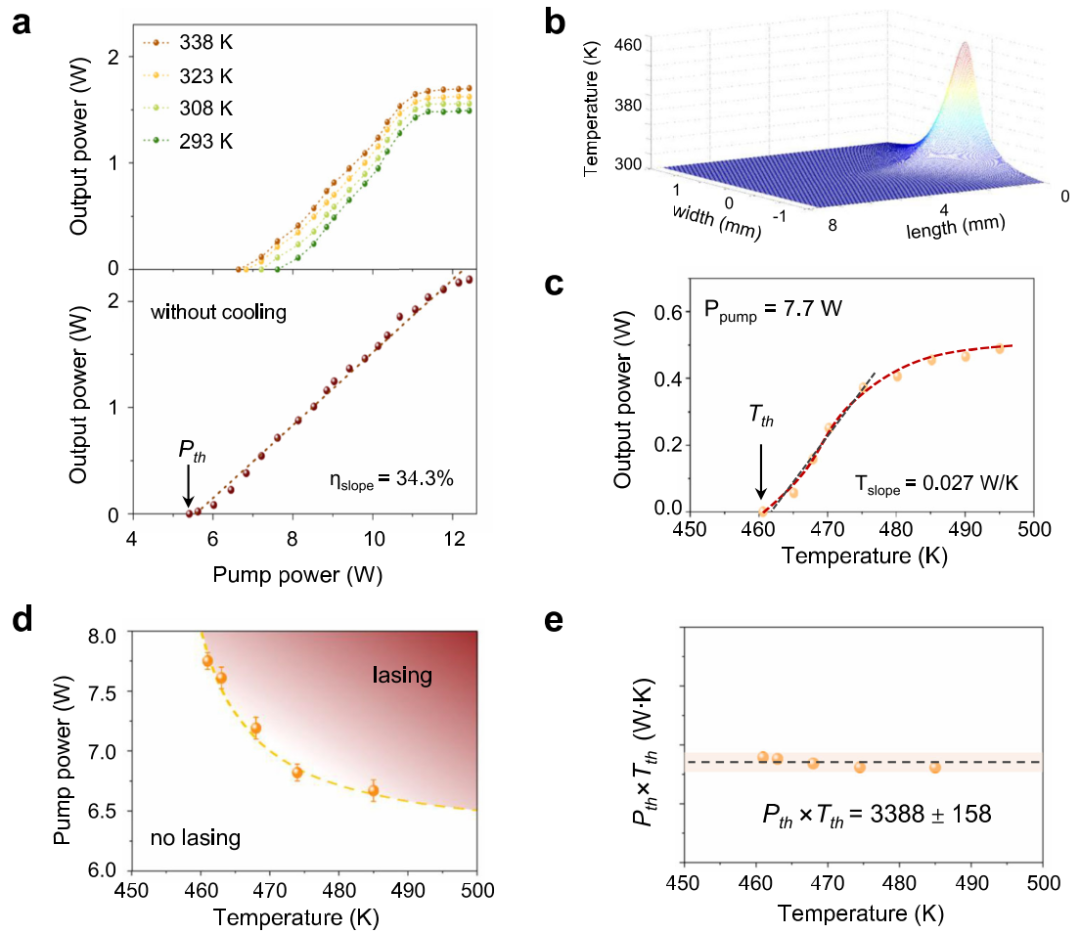Recent advances in laser generation mechanism and new laser research
Recently, the research group of Professor Zhang Huaijin and Professor Yu Haohai of the State Key Laboratory of Crystal Materials of Shandong University and Professor Chen Yanfeng and Professor He Cheng of the State Key Laboratory of Solid Microstructure Physics of Nanjing University have worked together to solve the problem and proposed the laser generation mechanism of phoon-phonon collaborative pumping, and took the traditional Nd:YVO4 laser crystal as the representative research object. The high efficiency laser output of superfluorescence is obtained by breaking through the electron energy level limit, and the physical relationship between the laser generation threshold and temperature (phonon number is closely related) is revealed, and the expression form is the same as Curie’s law. The study was published in Nature Communications (doi:10.1038/ S41467-023-433959-9) under the name “Photon-phonon collaboratively pumped laser”. Yu Fu and Fei Liang, PhD student of Class 2020, State Key Laboratory of Crystal Materials, Shandong University, are co-first authors, Cheng He, State Key Laboratory of Solid Microstructure Physics, Nanjing University, is the second author, and Professors Yu Haohai and Huaijin Zhang, Shandong University, and Yanfeng Chen, Nanjing University, are co-corresponding authors.
Since Einstein proposed the stimulated radiation theory of light in the last century, the laser mechanism has been fully developed, and in 1960, Maiman invented the first optically pumped solid-state laser. During laser generation, thermal relaxation is an important physical phenomenon accompanying laser generation, which seriously affects laser performance and available laser power. Thermal relaxation and thermal effect have always been considered as the key harmful physical parameters in the laser process, which must be reduced by various heat transfer and refrigeration technologies. Therefore, the history of laser development is considered to be the history of the struggle with waste heat.

Theoretical overview of photon-phonon cooperative pumping laser
The research team has long been engaged in laser and nonlinear optical materials research, and in recent years, the thermal relaxation process has been deeply understood from the perspective of solid state physics. Based on the basic idea that heat (temperature) is embodied in the microcosmic phonons, it is considered that thermal relaxation itself is a quantum process of electron-phonon coupling, which can realize quantum tailoring of electron energy levels through appropriate laser design, and obtain new electron transition channels to generate new wavelength laser. Based on this thinking, a new principle of electron-phonon cooperative pumping laser generation is proposed, and the electron transition rule under electron-phonon coupling is derived by taking Nd:YVO4, a basic laser crystal, as a representative object. At the same time, an uncooled photon-phonon cooperative pumping laser is constructed, which uses the traditional laser diode pumping technology. Laser with rare wavelength 1168nm and 1176nm is designed. On this basis, based on the basic principle of laser generation and electron-phonon coupling, it is found that the product of laser generation threshold and temperature is a constant, which is the same as the expression of Curie’s law in magnetism, and also demonstrates the basic physical law in the disordered phase transition process.

Experimental realization of photon-phonon cooperative pumping laser
This work provides a new perspective for cutting-edge research on laser generation mechanism, laser physics, and high energy laser, points out a new design dimension for laser wavelength expansion technology and laser crystal exploration, and may bring new research ideas for the development of quantum optics, laser medicine, laser display and other related application fields.
Post time: Jan-15-2024





